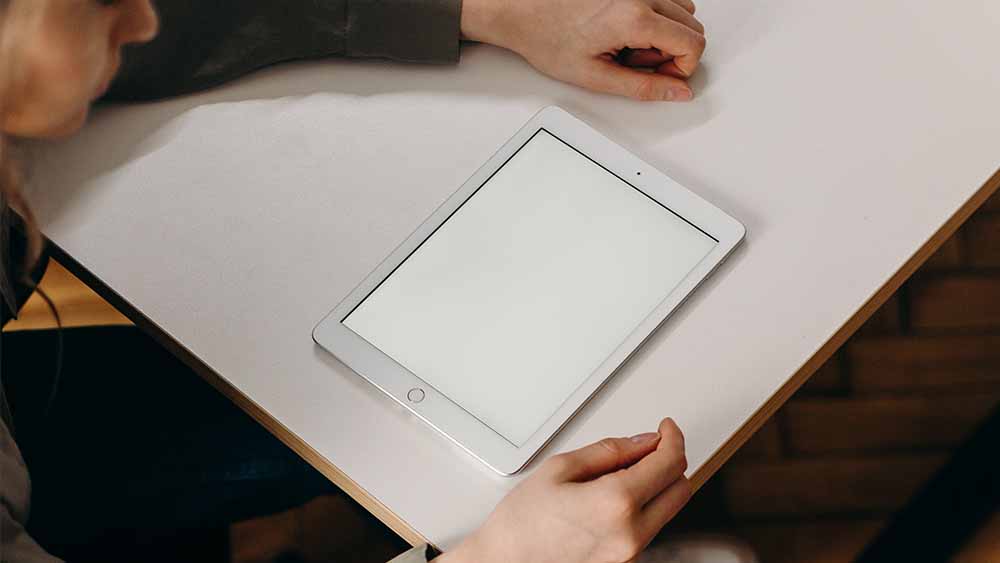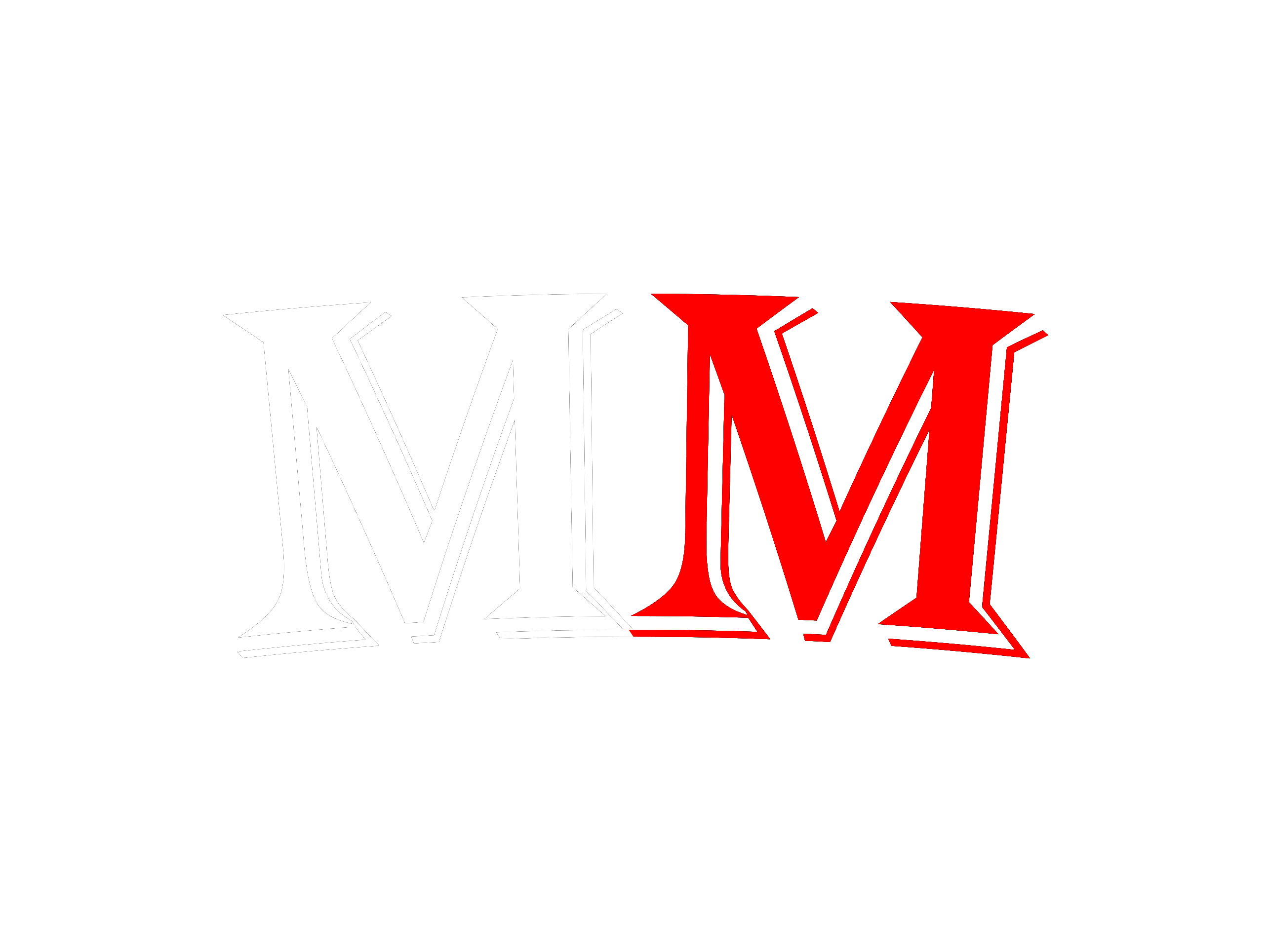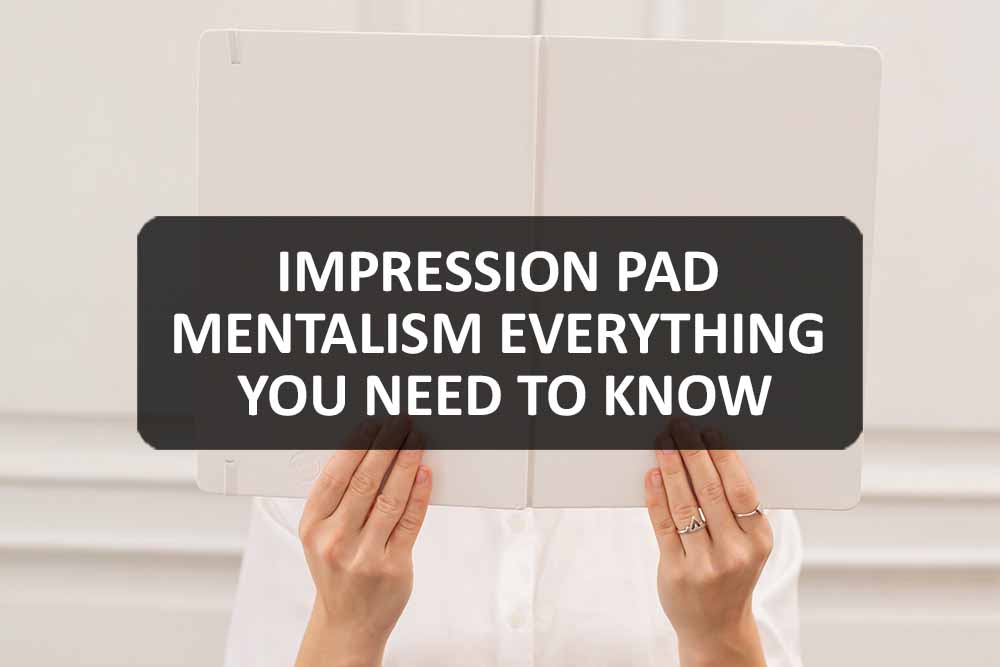Although there’s no one right way to do mentalism performances — in the end, you have to do tricks that are right for you and those that fit your persona — some concepts are universal.
First, there are your effects. You can choose to do a prediction trick or go for a telekinetic demonstration, such as spoon bending.
Second, there are techniques. How you pull off your techniques impacts the quality of your performance.
Lastly, there are devices. Mentalists use these to enhance their acts. Some mind-reading tricks use a swami pencil or thumb writer. The invisible touch trick uses transparent loops.
Today, we’ll be focusing on one of these devices – the impression pad.
Here, we’ll look into impress pad mentalism – how it’s done, what the public thinks about it, its pros and cons, and so much more.
So if you want to know all things about the impression pad, then let’s get started right away!
Impression Pad Mentalism – How Did It All Begin?
Let’s backtrack a bit and cover some ground before we zoom in on the impression pad.
What, in the first place, is an impression device?
Simply put, it’s something typically used by mentalists to glean information from a spectator. It comes in many forms, but a common variation is that of a pad, hence, the impression pad.
Now that we know what an impression device is, we’ll focus on the impression pad specifically.
The impression pad is an ordinary-looking writing tablet capable of capturing any image the spectator writes or draws. It means you get an opportunity to discover what they put down once you get it back.

Now, a long time ago, mentalists using several sheets of paper and a pen to achieve a similar effect. If they pressed down hard enough, the pieces underneath will show what was written down. Over time, though, audiences figured it out, so it was no longer an option for mentalists.
Just like mentalism itself, impression pads have evolved over the years. And mentalists have transitioned from this old-fashioned technique to using more tech-savvy devices.
Impression Pad Mentalism – the Different Perspectives from the Public
Similar to other topics, the whole subject of using the impression pad created a divide in the mentalist community.
Most mentalists aren’t against the idea of using an impression pad during your performances. After all, it’s an easy way to find out what your spectator wrote down.
On the other side, though, there are just as many people who believe you’d be better off using more authentic ways of getting information. These include techniques such as doing card peaks or performing center tears.
As you can see, there is a big split between those that like using these modern devices and those that prefer authentic techniques.
Impression Pad Mentalism – Ways to Use it in a Mentalism Performance
There are several tricks you can do using an impression pad.
The Impression Pad at a Pre-Show
You can put the impression pad to good use even before the actual performance. It can be a substitute for hot reading in the sense that you use it to gather information about your spectator for later use.
This method is appropriate for recorded shows or if you have pre-scheduled guests for your performance.
While your spectator is backstage or in the waiting room, have a brief chat with them. Say you want to make sure they’re comfortable during the trick later on.
Hand them the pad and say that you’ll be doing a mind-reading trick later, but you need time to sort out your thoughts. Ask them to write down the name of a significant person in their life — asking about first love or a memorable song is always an excellent way to go.
Once they finish writing, ask them to tear the paper off the clipboard and keep it with them at all times. Hold out your hand, and the person will instinctively give the pad back to you.
After retrieving the pad, you’ll see the impression of what she wrote.
During the actual show, don’t bring up what you asked your spectator to write. Instead, ask the question again, carefully wording your script to make it sound like you’re asking for the first time.
Lior Suchard is a master at this, as you can see from this video:
From there on it’s a matter of giving the illusion that you are trying to read their mind. All the while, you already know the answer — all thanks to the impression pad!
The Impression Pad for Street Mentalism Tricks
If you have a pocket-size impression pad, you can use it to perform mentalism tricks while walking along the street. You can whip it out of your pocket without giving the impression it’s a prop.
Now, approach your chosen spectator and say that you want to try reading his mind. Since it’s a street mentalism trick, you can ask about something that isn’t so serious — you can ask about his favorite video game or favorite snack.
Hand him the impression pad and ask him to write it down. Tell him to tear off the sheet with his response and keep it.
Now take the pad and flip to a different page. Ask him questions about his other preferences — say that you’re trying to glean what he wrote down based on what he tells you. Make sure, however, that your next questions in no way connect to what you asked him to scribble down.
Pretend to take note of his answers by writing these down on the pad. Angle yourself in such a way where he can see your pen moving, but not what you’re writing.
This move is vital since you’re using this to hide the fact that the pad is blank — take this opportunity to flip to where the impression is. Once you get a glimpse of what it is, subtly reset the impression pad and proceed to do your reveal.
Because it’s a street mentalism trick, conversational reveals work best. Work it into your patter — sometimes you can do it so smoothly it takes your spectator a moment to realize that you’ve mentioned what he had secretly written down.
Impression Pad Mentalism – The Pros and Cons of Using an Impression Pad
Want to know the pros and cons of using an impression pad?
The Pros
Effortless peeks. Mentalists mostly use impression pads for mind-reading or prediction tricks. You can get a clear picture of what your spectator wrote down without exerting a lot of effort. It is one of the main advantages of using an impression pad instead of doing a force or a peek.
Easy mentalism tricks. You can probably imagine how easy it is to do a mentalism trick using this device.
Have your spectator think of anything. You can choose any topic under the sun — the name of their first love, their favorite snack, their first pet’s name. And have them write it down on the impression pad.
Once the spectator finishes, have them tear the paper off and keep it. They never have to hand you that sheet — the only thing you’ll ask back is the pad.
The only challenge is how to get a glimpse of the impression they left behind. One technique is to ask several questions and pretend to write down your notes on the pad. In truth, you’re just using this as an excuse to flip through the pages until you see the impression.
As soon as you see it, build it into your patter. One effective way of doing a reveal is to incorporate it into the conversation.
Smartphone or smartwatch sync. There are impression pads, such as the ThoughtCast Pro, that syncs to your mobile phone or watch so you can peek from there. You don’t even need to get the pad back to know what your spectator wrote.
The Cons
Limited inspections. For some impression pads, like the Informer Impression Pad by Lloyd Mobley, the spectator cannot inspect it once they’ve written something. If they do, they’ll see the impression, ruining your trick. You can, however, give them a chance to inspect it before using it.
The need to reset. Erasing the impression is necessary before you can do the trick with a different spectator.
If you do it on stage, it shouldn’t be a concern — using the same device in a single show may not be the best of ideas.
However, if you’re doing street mentalism, having a group of spectators is a different thing. You may want to repeat the same trick with someone from the same group. If this is the case, you should practice resetting the impression pad without drawing much attention.
The price range. Yes, you’ll have to spend to get these impression pads. You might not be willing to spend on it when you can learn a technique for free, such as a peek technique.
In Conclusion
So that’s the impression pad.
Should you invest in it or not?
In the end, it boils down to a matter of preference.
There are many advantages to using an impression pad, as well as several things to think about before putting down your payment (especially if you’re leaning towards one of the more expensive models). If you really want it, then go ahead.

